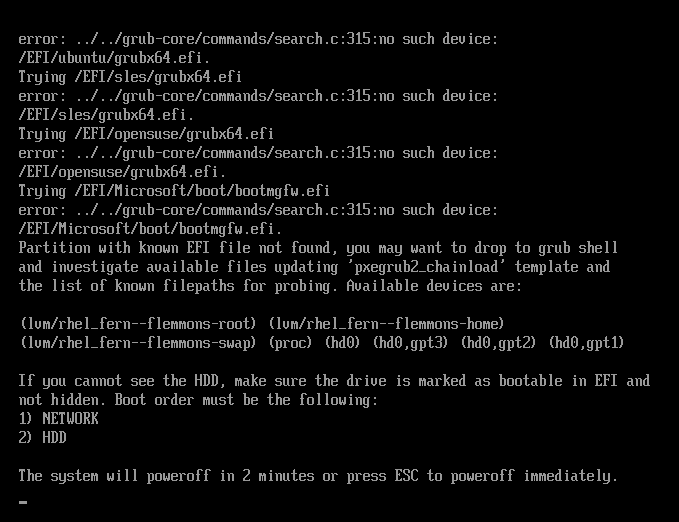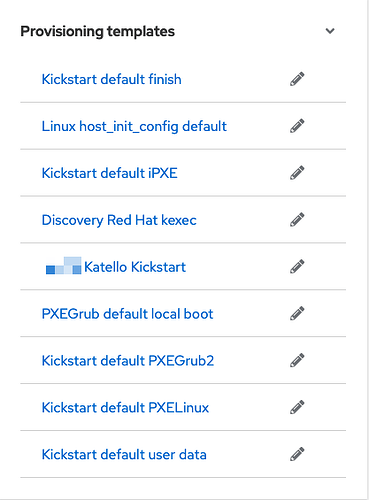Problem:
Expected outcome:
Foreman and Proxy versions: Foreman and Proxy plugin versions:
Distribution and version: https://centos.org/ ”https://bugzilla.redhat.com/ ”
Other relevant data:
This is the most recent line up of templates I tried:
This simply seems to be an issue with the EFI boot method, once I disabled and bypassed network boot, the server dropped right into the Grub boot menu and booted right up. Issue seems to be somewhere with the bootloader… I see the EFI boot partition is on sda1 → /boot/efi/EFI/redhat/grubx64.efi
Its seems to be a lower case/upper case issue on EFI. It seems to be presented as lowercase grub> ls (hd01)/ => efi/
its a fat filesystem issue (required for uefi)
opened 09:44AM - 14 Mar 20 UTC
closed 10:59AM - 22 Mar 20 UTC
wontfix
FAT32 filesystem


Jan
June 1, 2023, 5:52am
6
Is this VMware?
Could be this issue: Pxe with uefi katello 3.16
Long story short: GRUB2 in combination with certain firmware has issues in finding ESP, thus can’t chainload bootloader from disk.
Workaround #1 (see link above): Replace GRUB2 binary on TFTP server and add connectefi scsi to global GRUB2 template
Wordaround #2 (only VMware): Set efi.quickBoot.enabled = FALSE for VM
Both workarounds worked for me Thanks
We installed vmware-advanced GitHub - ananace/foreman_vmware_advanced: Foreman plugin to provide advanced VMWare configuration and that is now setting efi.quickBoot.enabled for each vm we create.
1 Like
Oh perfect!! That’ll work for now. Thanks for posting!!
Where (once added) does it add the ability to make those “Advanced” changes in the Provisioning?
As in where in Foreman does it as a section to make those changes/settings? I don’t see anywhere that it’s available.
opened 06:12AM - 02 Jun 23 UTC
question
How do we create a setting need to set.
efi.quickBoot.enabled = FALSE
Describes the settings
You’d create the file /etc/foreman/plugins/foreman_vmware_advanced.yaml, and list all your VMX settings under the key :vmware_advanced in it, something like;
— :vmware_advanced: efi.quickBoot.enabled: ‘FALSE’
I should really write a blurb about the configuration in the readme, that entirely got forgotten while redoing the configuration for the plugin.
1 Like
Ah the missing peice! Perfect. Thanks man! Hopefully others find this useful too.


